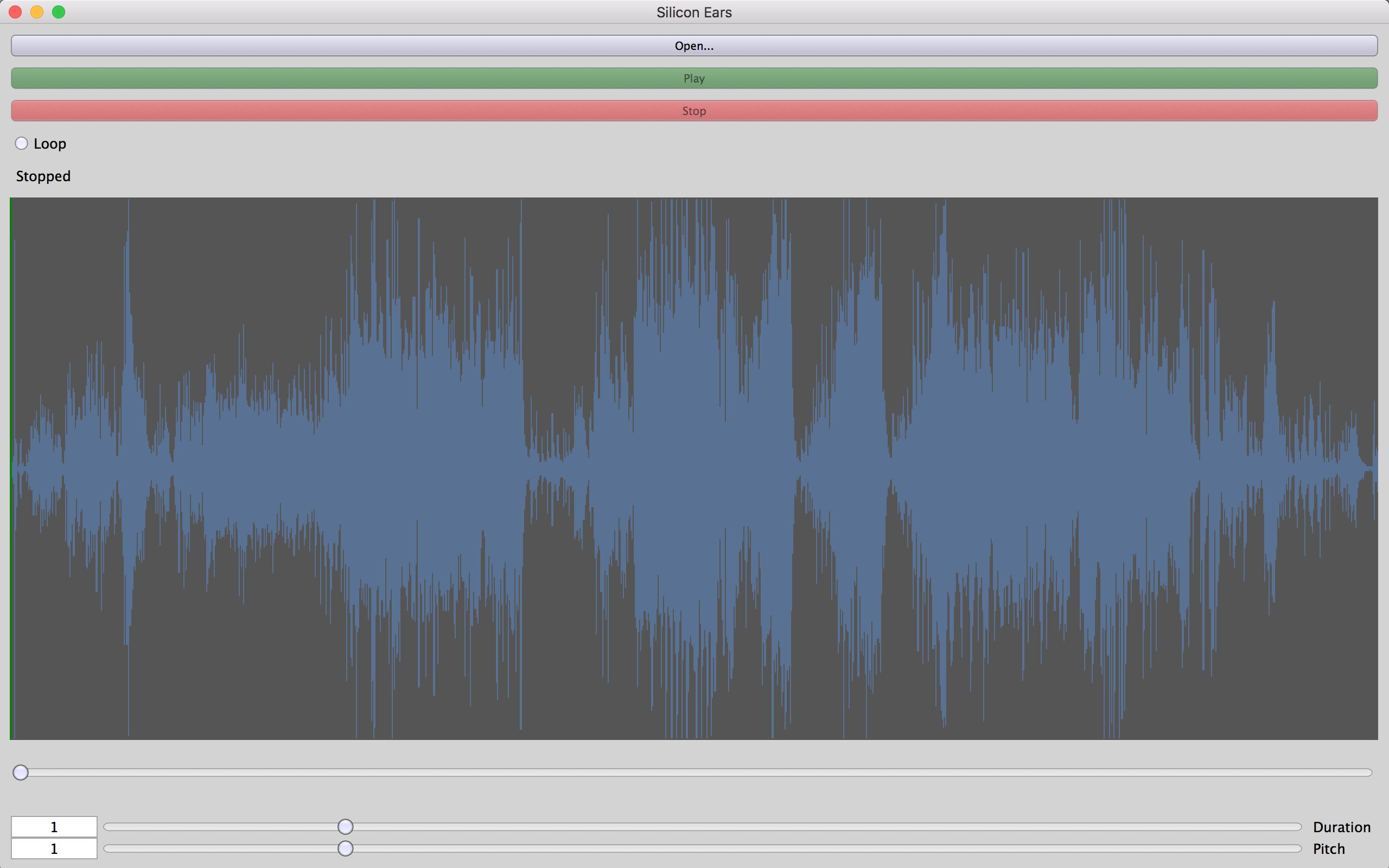Derek Zoolander’s Silicon Ears For People Who Can’t Music Good (And Who Wanna Learn To Do Other Stuff Good Too)
As musicians, we feel that the study of recordings and live performances develops musical understanding and skills that cannot be obtained from the study of scores. Transcription of existing musical performances develops the relationship between musical concepts as they are taught, and a musician’s “inner ear.” There’s a wall for beginning musicians when they try to start transcription, and classical aural-training exercises are both boring, and insufficient. Writing down a monophonic piano line that the teacher played is one thing, picking out a note from a beebop solo with many other instruments in the mix is entirely another. Existing transcription so ware is either expensive Transcribe! or hard to use (Sonic Visualizer, Audacity).

What is it?
Silicon Ears provides an interface for the non-technical user to independently manipulate the pitch and time-scale of an audio recording. The goal is to provide an easy interface for selecting transpositions, and slowing recordings down for close study, or accompanied practice.
How does it work?
Silicon Ears was built on JUCE, a C++ toolkit, and RubberBand, a phase vocoder implementation. The main work so far has been to develop buffering systems capable of supporting real-time stretched and pitch-shifted playback.
The core of the system is a concurrent-access ring buffer that holds the
stretched audio data for consumption. The background thread loads and stretches
the data, pushing it into this buffer, while the audio thread pulls data from
it, the goal being to maintain the sample rate that the audio-thread requires
for glitch free playback regardless of the stretch-ratio being applied to the
file.

How good is it?
The program needs to be at least…. THREE TIMES LESS GLITCHY. The buffering system described above works. For a certain definition of works. It plays audio and doesn’t sound completely terrible. However, there is an issue with the wrapping at the ring buffer, and at smaller buffer sizes, an audible pop can be heard every time the . Low-level inspection of the system and the raw arrays suggests that the code is handling the data correctly, and that there are no off-by 1 errors in the stream. Since this is a real-time system, I suspect that the issue is cache-related. When the ring-buffer cycles, it breaks the linear memory access pattern, and until the cache catches up, there’s a moment where the audio-thread starves for data. Pre-fetching at the ringbuffer wrap-point would solve this (or buffering the buffer).
Long story short. Real time is really hard. Interesting (read ear-destroying) glitches will be heard if the system is run with other applications placing noticeable CPU load on the operating system.
Currently, the system is incomplete. The final product will allow users to select loops, and bookmark their selections for later reference, as well as support simple annotation of the waveform for analysis of musical structure.
A long term goal, which may not be possible due to SDK and license restrictions, would be to provide integration with Spotify (or a similar streaming service).